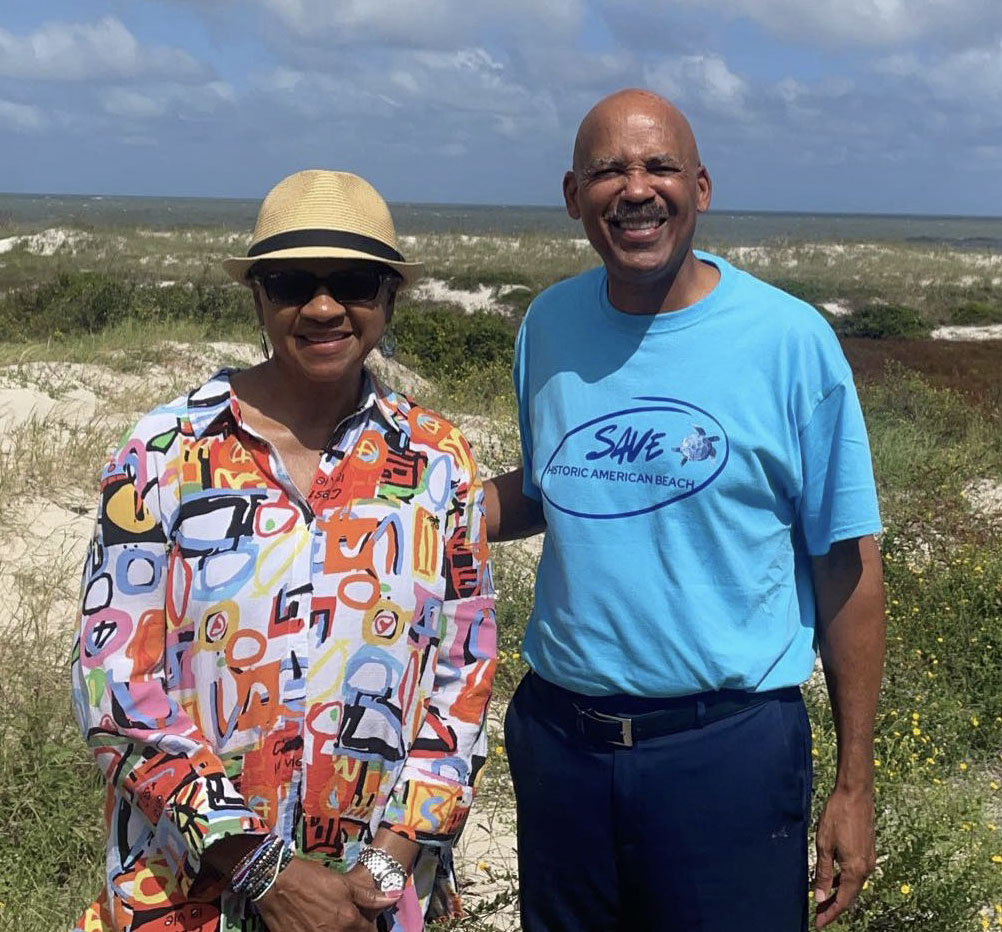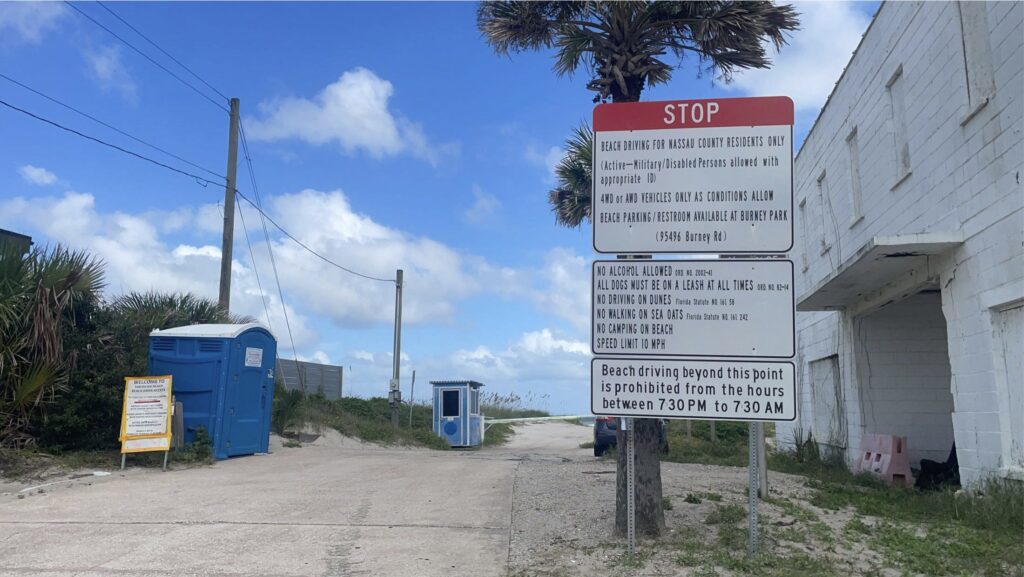By Kate Kimmel

Save Historic American Beach directors Mark Dawkins and Pam Buncum said they were disappointed with Nassau County’s recent amendments to its beach-driving ordinance.
The two have become key figures in a lawsuit filed in March against the county, though they noted the fight to stop vehicles on American Beach stretches back more than three decades.
“It’s been 35 years of people asking for this,” Buncum said. “When we filed the lawsuit, people asked me if I ever thought it would come to this. I told them, ‘I don’t think the county ever thought it would come to this.’”
The lawsuit, filed in March, alleged that the county’s tolerance of beach driving violated the Endangered Species Act by putting nesting sea turtles at risk. In late July, a judge ordered both sides to find a compromise.
The county responded by limiting the hours cars are allowed on the sand to times when turtles are not actively nesting. Dawkins and Buncum say it’s not enough.
“We just want the county to do the right thing and stop beach driving entirely,” Dawkins said. “Even if you prohibit nighttime traffic, there are still ruts and tire marks that turtles get stuck in.”
Enforcement of the ordinance, they argue, has always been shaky. Buncum said she has seen trucks run over turtle tracks before volunteer monitors could reach them. She said “regulars,” including shark fishermen, have been waved through the barricades earlier in the morning than the ordinance permits.
Dawkins was disappointed by the length and lack of depth contained in the county’s 12-page ordinance. At the Aug. 11 meeting, he dropped thick binders of other counties’ beach ordinances on the table — some topping 300 pages. Nassau’s slim version, he said, signals a lack of seriousness.
“There was not enough time and effort put into that document,” Buncum said. “It let us know how unserious the county is about this.”
County officials have defended the ordinance changes as a fair balance and leaned on tradition as justification. Beach driving, they said, is part of Nassau’s identity.
Buncum doesn’t buy it. “If it’s such a tradition, then it should be allowed everywhere on Amelia Island, not just at American Beach,” she said. “It used to be tradition not to wear seatbelts. As things change, you have to pivot.”
For Dawkins, the fight isn’t just about turtles. It’s about the island itself. “The whole dune system protects the island,” he said. “Any breaks jeopardize the whole island. You want dunes to be as high and deep as they can be all along the ocean so that when you do get a storm, you’re protected.”
The County met with Save Historic American Beach members for over six hours following the passage of the new ordinance. Still, Dawkins doubts the county will abandon beach driving outright.
And yet, he and Buncum insist, they’re not going anywhere. The campaign that began decades ago will continue until the sand — and the dunes that hold it together — are free of tire tracks.
kkimmel@nassaunewsline.net





